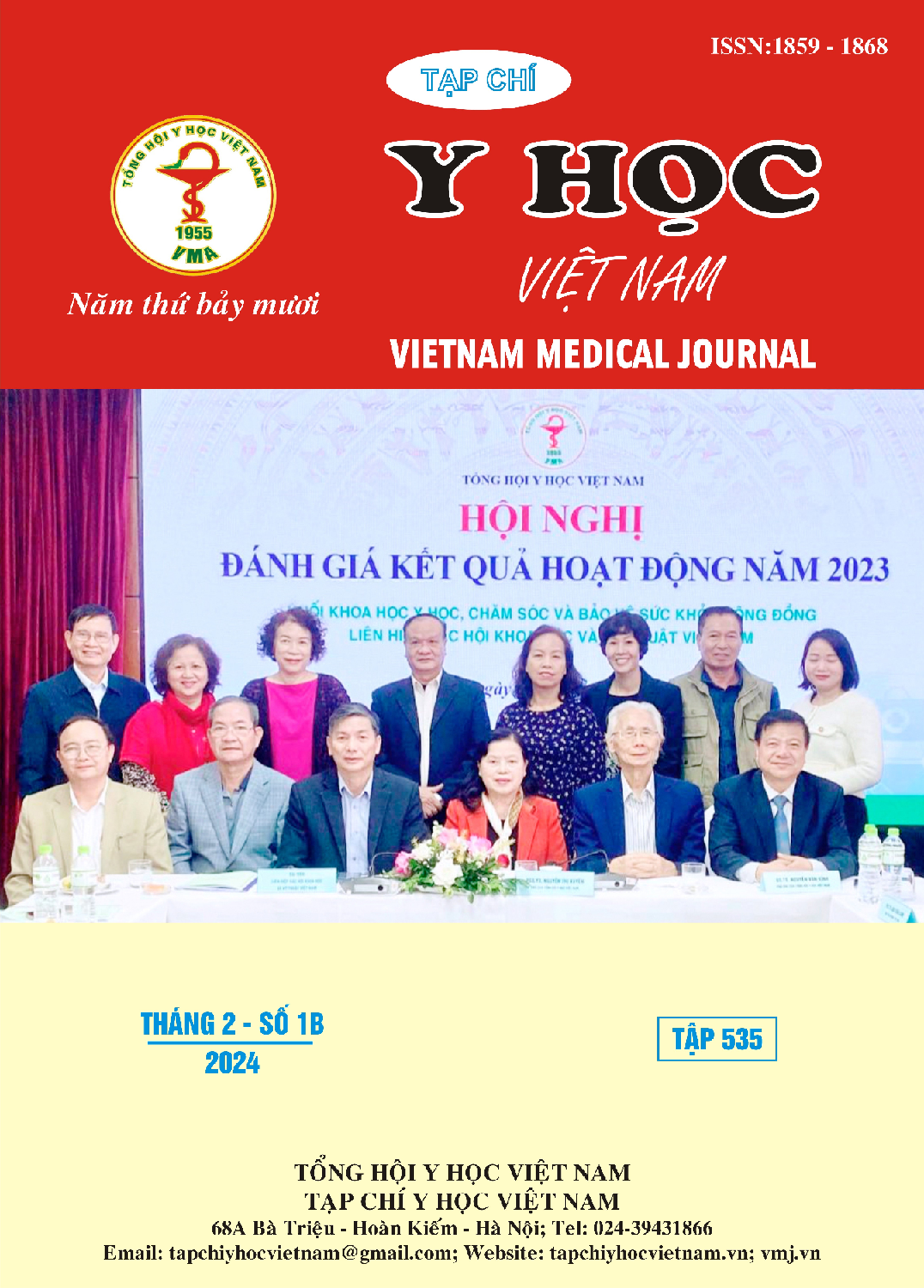ĐẶC ĐIỂM LÂM SÀNG, CẬN LÂM SÀNG VÀ MỘT SỐ YẾU TỐ TIÊN LƯỢNG ĐIỀU TRỊ VIÊM MÀNG NÃO NHIỄM KHUẨN Ở TRẺ EM TẠI BỆNH VIỆN SẢN NHI NGHỆ AN
Nội dung chính của bài viết
Tóm tắt
Mục tiêu: Mô tả đặc điểm lâm sàng, cận lâm sàng và một số yếu tố tiên lượng điều trị viêm màng não nhiễm khuẩn ở trẻ em tại Bệnh viện Sản nhi Nghệ an. Đối tượng và phương pháp nghiên cứu: Bệnh nhân được chẩn đoán viêm màng não nhiễm khuẩn điều trị tại khoa Nhiệt đới - Bệnh viện Sản Nhi Nghệ An. Kết quả: nam gặp nhiều hơn nữ và nhóm tuổi >1 tháng đến 2 tuổi chiếm tỷ lệ mắc cao nhất (53,3%). Các biểu hiện lâm sàng thường gặp là cứng gáy, sốt, đau đầu/quấy khóc, chiếm tỷ lệ lần lượt 73,3%, 66,7% và 66,7%. Tỷ lệ bệnh nhân thiếu máu (Hb<100g/l) chiếm 46,7%, bạch cầu tăng (10.000g/l) chiếm 80% và nồng độ CRP tăng (>6mg/ml) chiếm 80%. Tỷ lệ biến đổi màu sắc dịch não tủy chiếm 70%. Căn nguyên gây bệnh hay gặp nhất là phế cầu chiếm 40%. Về điều trị, tỷ lệ tiến triển xấu ở nhóm bệnh nhân >1 tháng - 2 tuổi chiếm tỷ lệ cao nhất (23,1%). Tri giác giảm, co giật khi vào viện, thời gian vào viện > 5 ngày và nồng độ CRP >30mg/l cũng là những yếu tố có liên quan đến tiến triển bệnh xấu. Kết luận: Các biểu hiện lâm sàng thường gặp trong viêm màng não nhiễm khuẩn là cứng gáy, sốt, đau đầu/quấy khóc. Căn nguyên gây bệnh hay gặp nhất là phế cầu. Các yếu tố liên quan đến tiên lượng điều trị xấu là: tuổi dưới 2 tuổi, tri giác giảm, co giật khi vào viện, thời gian vào viện > 5 ngày và nồng độ CRP >30mg/l.
Chi tiết bài viết
Từ khóa
lâm sàng, cận lâm sàng, tiên lượng điều trị, viêm màng não nhiễm khuẩn, trẻ em
Tài liệu tham khảo
2. Hai-Lun Peng, Yue Hu, Hong-Jia Chen, Pan-Pan Song, Li Jiang (2018). Risk factors for poor prognosis in children with refractory purulent meningitis and the discharge criteria. Journal of Infection and Public Health, 11 (2), 238-242.
3. Vos T, Lim SS, Abbafati C, et al (2020). Global burden of 369 diseases and injuries in 204 countries and territories, 1990–2019: a systematic analysis for the Global Burden of Disease Study 2019. Lancet; 396 (10258):1204–1222.
4. Daniela Caldas Teixeira, Lilian Martins Oliveira Diniz, Nathalia Sernizon Guimarães (2020). Risk factors associated with the outcomes of pediatric bacterial meningitis: a systematic reviewFatores de risco associados aos desfechos da meningite bacteriana pediátrica: uma revisão sistemática. Jornal de Pediatria; 96(2), 159-167.
5. Sedera Aurélien Mioramalala, Rado Malalatiana Ramasy Razafindratovo, Ando Rakotozanany4, et al (2018). Analysis of Death and Survival Factors Associated with Childhood Bacterial Meningitis at a Reference Pediatric Hospital in Antananarivo, Madagascar. Journal of Immunological Sciences; S (003): 17-23
6. Nguyen-Huu, C. D., Bui-Binh-Bao, S., Tran, K. H., Mai, et al (2022). Main Clinical and Laboratory Features of Children with Bacterial Meningitis: Experience from a Tertiary Paediatric Centre in Central Vietnam. Pediatric health, medicine and therapeutics, 13, 289 -295.
7. Bùi Vũ Huy và cộng sự 2010. Nghiên cứu các biến chứng của bệnh viêm màng não mủ trẻ em bằng chụp cắt lớp vi tính. Tạp chí nghiên cứu y học, phụ trương số 4, 233-238.
8. Nguyễn Thị Thu Hương, Trần Mạnh Tùng, Nguyễn Thị Thu Yến và cộng sự (2015). Đặc điểm dịch tễ học, lâm sàng viêm não - màng não tại Bệnh viện Nhi Trung ương năm 2011- 2014. Tạp chí Y học dự phòng; 25(8), 168-172.
9. Abdulwahed Zainel, Hana Mitchell, Manish Sadarangani (2021). Review Bacterial Meningitis in Children: Neurological Complications, Associated Risk Factors, and Prevention. Microorganisms; 9, 535.
10. Nguyễn Thị Thu Cúc, Nguyễn Thị Thanh Nhàn, Nguyễn Thị Thu (2018). Nghiên cứu đặc điểm lâm sàng cận lâm sàng và kết quả điều trị viêm não màng não ở trẻ em tại bệnh viện Nhi đồng Cần thơ năm 2016 – 2017. Tạp chí Y dược học Cần Thơ, 56 (7), 148-153.


